Example: (see below for links to lists applicable to this index map)
Wilderness Area #34 Bigelow Cholla Garden Wilderness
is located approximately within;
Subsection 322Am – Piute Valley – Sacramento Mountains
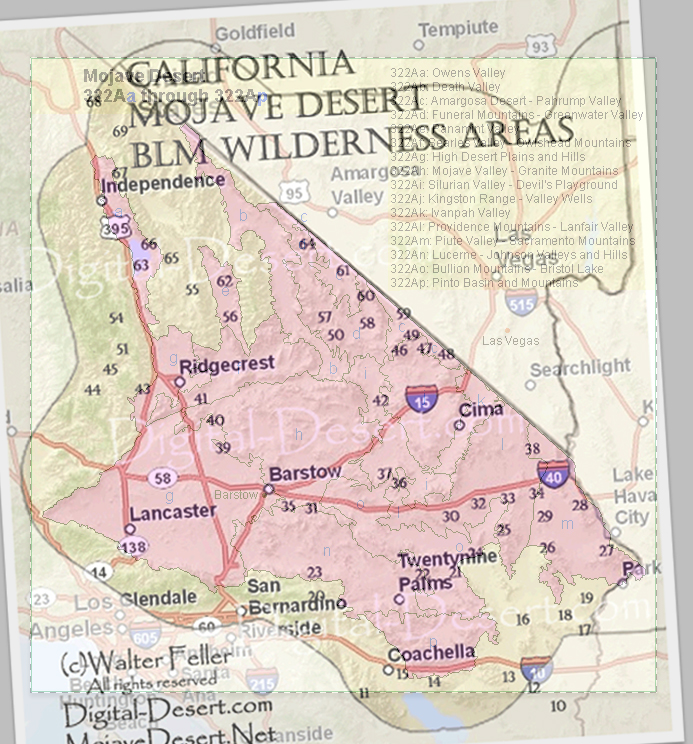
Example: (see below for links to lists applicable to this index map)
is located approximately within;

A chapter from Senator Harry Reid’s book
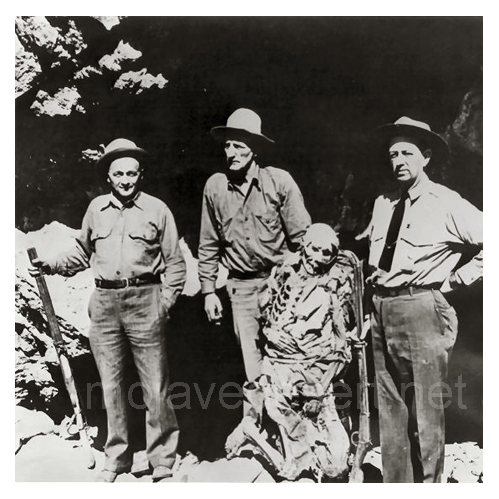
On February 21, 1940, the banner headline in the Las Vegas Review-Journal— BODY OF INDIAN FOUND— recalled for many in the town memories of the first murder the dead Indian had committed, thirty years earlier at Timber Mountain, just a few miles from Searchlight in the McCullough Range.
On a cool fall day in October 1910, Harriett and John Reid were on their way, via horse-drawn wagon, to work at their mine—she manned the horse-operated hoist, and he mined the ore. They could see an Indian approaching them, carrying a .30-.30 Winchester rifle and traveling at a very fast pace. The Reids stopped, as did the Indian, whom they recognized as Queho, an acquaintance who worked at various menial jobs throughout the Searchlight area. They exchanged greetings and after a brief visit went their separate ways. Later, the Reids and everyone else in the area learned that Queho had been hurrying down from Timber Mountain, where he had been cutting wood for J.W. Woodworth, a timber and firewood contractor. Woodworth had refused to pay Queho, who then flew into a rage and beat the man to death with one of the timbers he had cut. This murder was the beginning of an odyssey that took thirty years to play out.
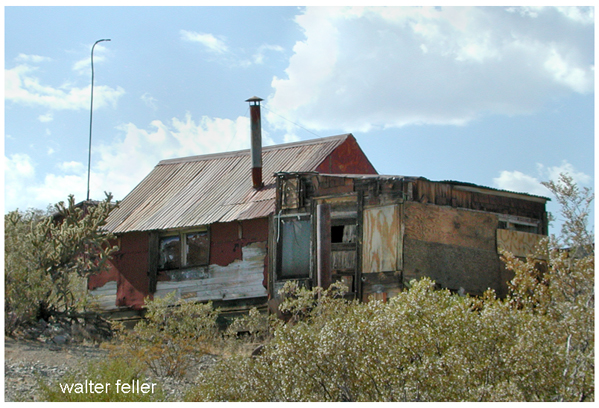
Queho soon struck again, this time near the river in Eldorado Canyon, at the Gold Bug Mine, which was partially owned by Frank Rockefeller, brother of John D. Rockefeller. A short time afterward, Queho admitted to Canyon Charlie, an Indian elder almost a hundred years old, that he had killed the mine’s night watchman, his former employer. The second murder occurred on the route between the Crescent area, where the woodcutter was killed, and the river.
Local lawmen, who viewed Queho as little more than an ignorant savage, thought that catching him would be child’s play. They couldn’t have been more wrong. The clever Indian stole a horse from a man named Cox and eluded the law.
A large manhunt was organized to apprehend the Indian outlaw. It was assumed that Queho would be easy to track, since he dragged one leg as a result of an earlier injury. James Babcock, an operator of the Eldorado mine and a lawyer educated in Washington, D.C., led the search party. He was accompanied by a contingent of Las Vegas lawmen, including Ike Alcock, as well as Indian trackers and an Indian agent named DeCrevecoeur. One of the pursuers was overheard remarking that Queho’s chances of living a long and happy life were very slim. The manhunt extended more than 200 miles, ranging from Crescent to Nipton and even coursing toward Pahranagat Valley, nearly 150 miles to the north. The pursuers gave up the search when supplies ran out and they grew weary. At that point the lawmen began to suspect that maybe this Indian was cunning and smart, not quite the “dumb” savage they had thought.
Queho was subsequently blamed for a number of murders that he did not commit. The first was the murder of James Patterson. The newspaper headline read, MAN KILLED BY QUEHO STILL ALIVE. Patterson hadn’t been killed by the Indian or anyone else—as was evident when he turned up alive and unharmed. But in the course of looking for Patterson, the search party found another man whom Queho had shot.
The press closely followed Queho’s escapades. A reward of $500 was offered for the Indian’s capture, and Nevada’s only member of Congress announced that the federal government should assist in the capture of this madman.
In March 1911 it was reported that two men on the Arizona side of the river, just below Searchlight, watched Queho beat a white man to death on the opposite side. The prospectors were powerless to help, as they had no way to cross the river; they were also unarmed and feared that Queho was armed and would attack them. By this time fear gripped the entire region.
It was believed that the best method for apprehending Queho was to enlist the Piutes in the search, which was the standard operating procedure at the time. Whites regularly abused and harassed the Indians, and if an Indian committed a crime, the white community would force the Indians to produce someone to answer for the crime. To fail in this responsibility meant great distress for the Indians because it led to further harassment by the whites.
In the hills below Searchlight, about five miles from the river, one of the Du Pont heirs to the chemical fortune of the Eastern United States was encamped. He was an outcast from his famous family. At the urging of voices that only he could hear, he began digging a tunnel through one of the volcanic mountains with a pick and shovel. He started the tunnel in 1896, even before gold was discovered in Searchlight, and eventually extended it nearly 2,000 feet through the solid volcanic rock. Du Pont was always friendly to the Indians who came by his camp and often shared his provisions with them. But shortly after the murders of Woodworth and the Gold Bug watchman, some of Du Pont’s supplies disappeared, and Queho was said to be the culprit. The newspaper editorialized that the federal government owed a responsibility to the people of Searchlight to intercede in this Indian affair. It wrote: “A good Indian is a dead Indian.”
Most still believed Queho would be caught, that with both Indians and whites on his trail victory was assured. The Las Vegas Age newspaper headlined an article with QUEHO THE BAD INDIAN IS IN A BAD FIX. In a subsequent edition the paper said that civilians and bad whiskey had turned Queho into the killer he was. The paper also observed: “It is very probable that Mr. Queho’s days are numbered considering those after him.”
The posse was large and well equipped, as all other hunting and tracking parties had been. At this point it was believed that Queho had come back to the river. Alcock wrote to Constable Colton in Searchlight, informing him that he was on the trail of Queho, as he had recently found fresh tracks at Cow Wells, near Searchlight. Queho was also reported to have been seen in the town itself at least once. The posse came up empty-handed.
In 1912 Fred Pine, while hunting near Timber Mountain, came upon Queho, who was armed with his ever-present Winchester. The men exchanged greetings. Pine asked Queho if he would like one of his sandwiches. Queho accepted, and in return offered, Pine one of his dried rats or chipmunks. Pine finally turned to leave, expecting at any moment to be shot in the back, but nothing happened.
Queho was surely an expert at hunting and fishing. He could eat anything, including tortoises, chuckawallas, burros, horses, mountain sheep, chipmunks, rats and various birds.
The Queho legend began to grow. Several manhunts were organized—all public, all ending in failure. The Searchlight newspaper ceased publication, so news about the comings and goings of the fugitive was no longer so sensationalized. Though some believed he had been killed by other Indians, occasional sightings were reported. There were even rumors that he had a girlfriend around Searchlight named Indian Mary. Others reported having seen him in Searchlight. Murl Emery told people that he had seen Queho several times. Searchlight residents indicated that some contact was maintained with him over the next twenty-five years.
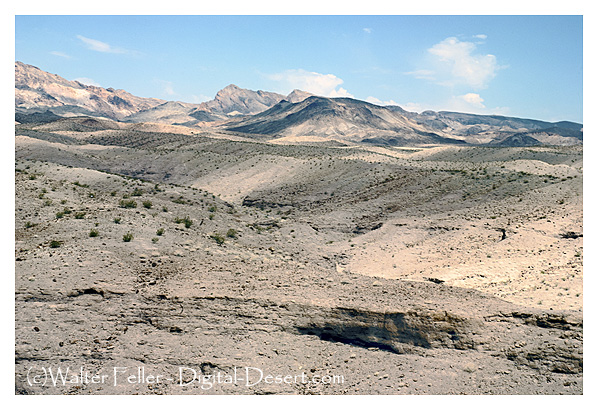
Seven years later, in the winter of 1919, the peace of the countryside was again shattered when Maude Douglas was murdered in her home at the Techatticup Mine in Eldorado Canyon. She heard a noise in the dead of night, walked into the kitchen to investigate, and was felled by a shotgun blast. On the floor was spilled cornmeal that the intruder had been trying to take from the cupboard. The trail from the cabin showed tracks of a man with a noticeable limp, like Queho’s.
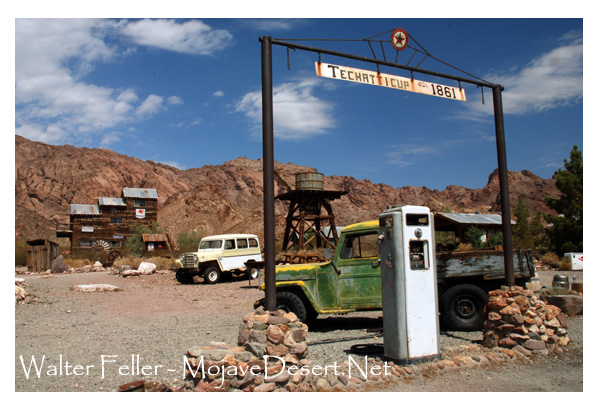
Mrs. Douglas was married and had two children of her own, as well as the responsibility for two other small youngsters, Bertha and Leo Kennedy. Leo, who was only four years old at the time of the murder, later said that Maude had been killed by Arvin Douglas, the man of the house. There is no corroborating evidence to support that claim, especially in view of the uniquely patterned tracks at the Douglas cabin. Bertha also said that she felt responsible, because she had awakened Mrs. Douglas for a drink of water and if she had not done that, the woman would not have gone into the kitchen.
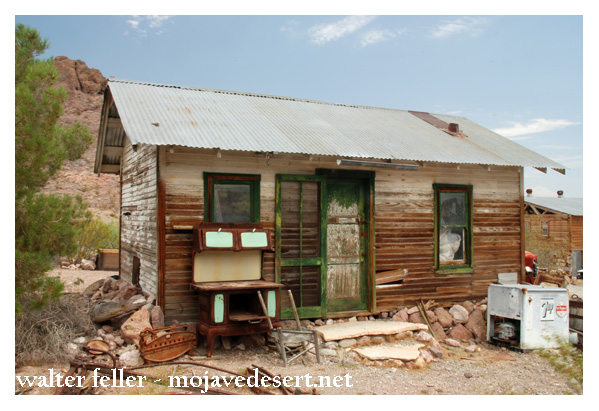
The overwhelming weight of the evidence pointed to Queho, as confirmed by a coroner’s inquest that was convened after Maude’s death. The coroner determined that she had been shot at close range and that the tracks from the house fit Queho’s.
The murder of Maude Douglas initiated a new era of Queho hunting. During the chase, the search party found a mountain sheep that Queho had recently slaughtered. They also found two dead miners named Taylor and Hancock, whom he had killed with their own prospector’s pick. The searchers soon learned that Queho traveled at night and holed up during the day. The pursuit ended in futility after three weeks, with the near death of the group’s leader, Frank Wait, from exhaustion.
Wait believed that Queho was hiding in the area where he had killed Woodworth. Knowing that he was being followed, Queho did not want to attract attention with gunshots, so he killed the two miners with their pick, probably to get a replacement for his worn boots. Sheriff Joe Keate described him as being able to starve a coyote to death and still have plenty of strength to continue. He reportedly knew of places in the desert where depressions worn into the rock stored rainwater for up to a year.
Alcock, a man named Alvord, an Indian trader named Baboon, and ten others made up the search party. Among the group were some Indians, and it was discovered that they were signaling Queho by smoke signal, thus allowing the killer to elude his pursuers.
The reward was increased to $3,000. Individuals and groups found evidence of Queho—a cave he had stayed in along the Colorado, remains of a mountain sheep and a burro.
For the next few years, another period of quiet prevailed when no recorded murders were known to have been committed by Queho. Nevertheless, no one felt secure. Prospectors and others tried to travel in pairs, one or the other of them always keeping watch at night. Not until 1935 did the next confirmed sighting of Queho take place. A cowboy named Charles Parker had a mare disappear; a week later the horse was found with part of its carcass cut away, obviously for eating. Upon investigating, the cowboy got more than he had bargained for. He was accosted by a scantily clad Indian with long, stringy hair and was robbed, but escaped unharmed. Searching the same area later, Parker and others found a cave along the river with drying jerky in it. A gunfight ensued and nine shots were fired, with no apparent injury to either of the parties.
As the years passed, Queho was accused of killing as many as twenty-one people. His first murder actually occurred before the Woodworth episode; the victim was his cousin or half brother, an Indian outlaw named Avote. The white community insisted that the Indians
produce someone to pay for Avote’s crimes, and so as a young man, Queho killed his relative at Cottonwood Island on the river below Searchlight. He also likely killed Bismark, a Las Vegas Indian, but that was a tribal killing and would not usually have been pursued in early Las Vegas. There were allegations of other killings but no actual proof.
Queho outsmarted the best that law enforcement had to offer. His pursuers may have come close on several occasions, but he always evaded him. He was an excellent shot and had a reputation of being extremely brutal.

Finally, in February 1940, Queho’s body was found by three prospectors in a cave about ten miles below Boulder Dam and 2,000 feet above the river. They also found fuses and blasting caps from the dam at the site. This cave was one of the best hidden and most impregnable hideaways imaginable. It even had a trip wire hooked to a bell to alert him of intruders. Queho had been dead for at least six months.
Some of his old pursuers, not wanting to acknowledge that they had been outsmarted for thirty years, tried to say he had been dead since 1919. Items in the cave from the construction of Boulder Dam quickly disproved their claim—veneer board, used in concrete moldings at the dam, that Queho used for protection from the elements. And there were fuses, which he used for reloading his bullets and shotgun shells. Also discovered in the cave was the badge of the night watchman killed at the Gold Bug Mine. His loaded Winchester rifle and the shotgun with which he likely killed Maude Douglas were in the cave, as well as a fine bow and twelve steel-tipped arrows (probably for fishing in the river), recently minted coins, and papers from some of his victims.
The large number of eyeglasses in the cave probably indicated that he was afflicted with poor eyesight in his later years. At death he was believed to be about sixty years old. He had died in a position of apparent pain, wearing a canvas hat and pants. One of his legs was wrapped with burlap, which indicated that he may have been snake-bitten. A former acquaintance confirmed the identity of the body by the unusual dental feature of double rows of teeth.
Charley Kenyon, one of the prospectors who discovered Queho’s body, later found other nearby caves that the Indian had used. Queho was also said to have panned a little gold, which he saved in Bull Durham tobacco sacks, then exchanged for food and other supplies. One of the persons who probably had some contact with Queho was the eminent Murl Emery, who always seemed protective of him and also admitted to leaving food for him. Emery was quoted as saying, “Why don’t you let the poor Indian rest?” Emery lived at and operated Nelson’s Landing for many years and was a constant companion of mystery writer Erle Stanley Gardner.
Queho remained controversial even after death. Two political enemies and former law enforcement officers, Gene Ward and Frank Wait, both involved in trying to bring the desperado to justice over the years, fought over his skeleton.
Neither won, as James Cashman and the Elks Lodge intervened to pay the funeral home for the costs of interment. The Elks then displayed Queho’s bones at Helldorado (the premier entertainment event in Las Vegas for more than forty years, beginning in the 1930s) as in a carnival attraction.
The bones were stolen from Helldorado Village and found in Bonanza Wash in Las Vegas; Dick Seneker subsequently acquired them and returned them when James Cashman again offered a reward. The Indian’s remains are now believed to be buried in Cathedral Canyon near Pahrump.
Queho’s name continues to bring forth tales too numerous to confirm. In an oral statement taken in the late 1970s, historian Elbert Edwards of Boulder City gave a rambling account of stories about Queho. Edwards did not rebut the stories of Queho’s murderous binge, attributing a total of seventeen murders to the Indian.
Edwards described one man who was killed with a pick handle before Woodworth was killed at Timber Mountain. He then confirmed the murders of the Gold Bug watchman, Maude Douglas at Nelson, the two St. Thomas miners Hancock and Taylor, and then two unidentified miners. He also described Queho’s murder of a wandering cowboy with his trusty rifle and spoke of five individuals who were killed in a cabin near what is now Boulder Dam—three with a rifle and two with a knife. Edwards’s narrative also related the story of two others, killed in nearby Black Canyon the next day. The authenticity of most of the murders recounted by Edwards is questionable, but they do reveal the legendary status accorded this Indian desperado.

Queho was a killer who outsmarted all who tried to capture him. The story is tragic, not only because of the lives that he took but because even in Searchlight his story illustrates to us how poorly Indians were treated. The first census, in 1900, reported forty-two Indians in Searchlight, obviously in the river area where there was water. They were eventually driven out of Searchlight.
In the summer of 1905 the Searchlight newspaper reported that the Indian village on the outskirts of town had been destroyed by fire. The paper disparagingly remarked: “All bucks and squaws were away.” Indians were granted no respect in Searchlight, and they were harassed and discriminated against in increasingly offensive ways. It is no wonder that Queho’s fellow Indians helped him. Nor is it surprising that he became known among the few Indians of the area as someone who had stood up to the white man.
–
From: Senator Harry Reid’s book, “Searchlight, The Camp That Didn’t Fail,”
University of Nevada Press.
by A. R. Clifton. A. M. – 1917
One of the most interesting studies of practical Socialism in Southern California is the history of the communistic colony, Llano del Rio, established in the Antelope Valley in 1914. This colony was founded by Job Harriman, a prominent Socialist of this State, and a company of associates who, like himself, were disappointed at the results accomplished by the Socialist party. In their opinion, tangible and measurable benefits to the cause would follow a practical demonstration of the principles of Socialism through community production and distribution, which could not be expected in any other way. In order to test the plan, this group of men began looking for suitable land upon which they could establish a cooperative settlement. After considering various propositions in Oregon, Nevada, and Arizona, as well as California, it was decided, everything considered, that a tract in the southern part of the Antelope Valley offered the largest advantages, so negotiations were quietly begun for obtaining control of the land and the water.
The site was located between Palmdale and Victorville — about twenty miles from Palmdale and thirty miles from Victorville, and about fifty miles northeast of ‘Los Angeles. Company literature states : “The property lies for the most part between Rock Creek and Mescal Creek, on the plain below, and running to the base of the mountains that form a magnificent watershed and which are snow capped for several months of the year”.1
It is part of the Angeles Forest Reserve and is in township 5 north, ranges 8, 9 and 10 west, San Bernardino meridian. The company holdings consisted of ten thousand acres when the colony occupied the tract, much of which was in the wild’ state, covered with chaparral, sage, greasewood, yuccas and junipers. The soil is largely decomposed granite, feldspar and lime of unknown depth. It contains sulfides and oxides of iron, potash, soda, carbonate of lime and magnesia. The essentials of plant life are found there in reasonable abundance.
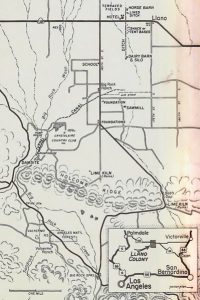 The lay of the land is ideal ; comparatively little is rough and that part is the foothill section, a portion of which was used for reservoir sites, the fish hatcheries, lime! kilns and stone quarries. From here the land slopes gently, making irrigation an easy matter.
The lay of the land is ideal ; comparatively little is rough and that part is the foothill section, a portion of which was used for reservoir sites, the fish hatcheries, lime! kilns and stone quarries. From here the land slopes gently, making irrigation an easy matter.
The water supply during the development period of the colony promised to be sufficient to meet all needs, present and future, if properly conserved and distributed. The exclusive right of the flow from Mescal Creek, Jackson’s Lake, and Boulder Creek had been secured and practically all of the flow from Big Rock Creek, through the control of the Big Rock irrigation district. Jackson’s Lake alone in the driest season yields one hundred and fifty miner’s inches and could be increased through the use of reservoirs. There are four good reservoir sites on the property with a total capacity of between thirty thousand and forty thousand acre feet.
The chief engineer in his report of 1915 says: “The area of watersheds adjoining these lands is approximately eighty square miles, which, with the usual forty inches of rainfall per annum, should yield about seventy thousand acre feet of water that could be used if it could all be saved — enough water, with the probable character of crops, to maintain forty thousand to fifty thousand acres of land under cultivation. Enough is known to assure an irrigated area of ten thousand acres or more of any crops, enough to support a population of five thousand souls and have a surplus of product for the open market”.2
The fall of water supplying the colony seemed sufficient, after the installation of power plants, to provide all the electricity for both light and power for many years to come. The water of Jackson’s Lake alone could have been distributed and directed so that there would be three separate drops of five hundred feet each. At the other end of the tract the proper development of the flow of Big Boulder Creek would have provided one of the most valuable power sites in the State of California, and the natural formation of foothill and valley would have made the development work comparatively inexpensive. A dam about two hundred feet in length and one hundred feet high, constructed between the hills on either side of the creek, would have flooded two hundred acres, making an immense amount of water available for irrigation as well as power for the generation of electricity.
The Llano del Rio Company had deeds to over two thousand acres of land, held tax titles to three thousand five hundred acres more, and through members of the colony had control of, three thousand five hundred acres additional, which made a tract of over nine thousand acres in all. Even this acreage did not satisfy the ambitions of the colonists. They planned to secure extensive additions — even up to thirty thousand acres, the amount of land in this irrigation district.
The cultivated land during the season of 1917 consisted of about two thousand acres, distributed as follows: alfalfa, four hundred acres ; orchard, one hundred twenty acres ; nursery, one hundred ; garden, one hundred twenty ; corn, two hundred ; and the balance in grain and general farm crops.
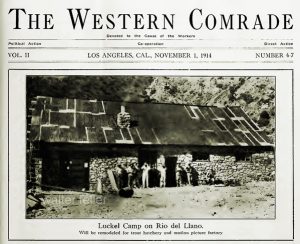 Those in authority at the colony maintained that it was possible for the members to devote their energy to the raising of a large variety as well as large quantities of products. The Vice-President informed me that peas, beans, potatoes, melons and all vegetables grew there abundantly; that of the fruits they would soon be producing pears, apples, peaches, plums, cherries, apricots, olives, and figs. These with the products of the dairy, the chicken yards, the rabbitry, the hog ranch and apiary would, according to the plan, not only feed the people of the colony but would enable them to buy in the quantities needed the things they could not produce.
Those in authority at the colony maintained that it was possible for the members to devote their energy to the raising of a large variety as well as large quantities of products. The Vice-President informed me that peas, beans, potatoes, melons and all vegetables grew there abundantly; that of the fruits they would soon be producing pears, apples, peaches, plums, cherries, apricots, olives, and figs. These with the products of the dairy, the chicken yards, the rabbitry, the hog ranch and apiary would, according to the plan, not only feed the people of the colony but would enable them to buy in the quantities needed the things they could not produce.
After four weeks of existence, the ninth of May, 1914, closed with five members. They had but a few tools with which to begin work, four horses, one cow and sixteen hogs.
Considering so small a beginning, the growth for the first three years was rather notable. There were, August 1, 1917, about one thousand members with nine hundred residents in the colony. There were one hundred head of horses, one hundred and twenty-five Jersey and Holstein cows and one hundred head of young stock, three hundred hogs, several thousand rabbits and chickens, six hundred eighty stands of bees, one hundred fifty turkeys, thirty-two goats, three trucks, twenty wagons, seven automobiles, a traction engine, a caterpillar engine, leveller, concrete mixer and pipe moulds for the making of cement pipes for the irrigation system, drags, and various other pieces of heavy machinery for clearing and preparing the land for planting on a large scale.
The buildings were largely of a temporary character, due partly to the fact that the site of the residence section was to be changed to ground a little higher, more protected from the wind and nearer the source of water most desirable for domestic purposes. There were tents and adobe houses enough, with the rooms in the club house, to take care of the nine hundred people in Llano at that time, and more were being put up as needed. They had a planing and sash and door mill of sufficient capacity to do all the sawing and milling work for the building operations.
The hen coops and rabbitry were modern in construction and very commodious, and it was intended to increase the capacity rapidly. The cattle barn was constructed of cobblestone, with tin roof, a great improvement over the cheaply constructed barn which I saw on my first visit to the colony in 1915. A fine concrete silo of three hundred ton capacity had recently been constructed, and the plans were well under way for a well-equipped dairy.
The office was small, but it answered the purpose very well. The Llano post office was housed in this building.
The most used and the most popular structure of the colony was the Club House. It consisted of a building fifty by one hundred and fifty feet, containing rooms for single men, the commissary department, the club kitchen and dining room, the barber shop, the colony boarded in the club dirting room. They were charged seventy-five cents a clay for their meals. This room, fifty by sixty feet, was used as the general audience room of the colony. It was here the assembly had its official meeting and where lectures, musical entertainments and parties were held.
The machinery for a steam laundry had been installed, which greatly lightened the housework. A lime kiln of one hundred fifty barrels capacity daily was in operation. An ice plant, a tannery and a shoe factory were to have been established if the plans for the colony had matured.
A printing plant had been established which, though of limited capacity, turned out a large amount of work. It was here the “Western Comrade”, a monthly magazine of thirty-two pages, the “Llano Colonist”, a weekly, and the pamphlets of the colony were published. This office had become the chief California center for the publication and dissemination of socialistic literature.
A well-equipped canning plant which was a valuable asset to the company activities had been installed. Both vegetables and fruits were preserved for the season when they could not be procured fresh. Quantities of fruit were made available by exchanging labor for it. Cleaning, dyeing, and soap-making added their contributions to the Llano industries. The list would not be complete without a mention of the rug-making department. Most excellent work was done — much better than one would think possible in the meager quarters provided. Rugs of beautiful design and good value were produced.
The homes of the people, as would be expected in an enterprise of this kind, were crude — tents and adobe of sun-dried brick, of one or two rooms. They were meagerly furnished for the most part, but sanitary; and no one seemed to be the worse for the pioneer experience. The home planned for the future, however, — the one which according to the contract of the company it was under obligation to build for all members of this cooperative plan, — was to be much more comfortably appointed, and is thus described in the company literature: “The house will be built around a patio or court, turning a blank wall towards the neighbor, against which he in turn constructs his house. Then you look across your own garden at your own windows and neither hear nor see your neighbor, who retires behind a soundproof wall.
When in your garden you can lounge or work at your ease, and if you turn your little children out of doors they will never be out of sight, no matter what room in the house you may be in. There is a living room twenty by twenty-eight feet, a sun-parlor dining room thirty-five by fourteen feet, two bedrooms ten and one- half by twelve and one-half feet, with a bathroom between them. Upstairs there is a flat roof, separated from your neighbor’s by an eight-foot wall with eaves, with two dressing rooms and space for eight beds arranged two by two in separate recesses. These beds only occupy part of the roof at any time, but they can be folded back against the wall, leaving the roof free. So, if desired, twelve people can be accommodated downstairs and up, without any crowding”.8
The proposed construction of these homes indicated a complete system of water works and a sewerage system.
All the products of the colony passed through the commissary department. Here they were weighed, sorted and placed on the market to members of the colony at a price as near cost “as practicable”. It was also agreed by contract that all clothing was to be purchased from the company. Both food and clothing were very plain. All surplus funds were needed in the development work, hence little was left for anything but the bare necessities.
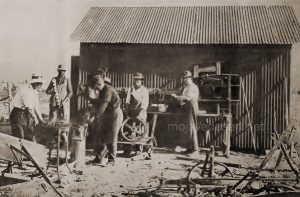 The work of opening up a desert ranch, — planting, sowing, irrigating, harvesting, building and planning, — is strenuous, but there seemed to be a willingness on the part of practically everyone to bear his share of the burdens. Eight hours were the regular day’s work. There were those, however, who worked longer and who were willing to do it, for as several expressed it to me, “We are working for ourselves now. No capitalist who has no interest in us further than that we can increase his wealth, gets the benefit of our extra work. It belongs to us”. There were some, however, who seemed to have no particular desire to put in extra time for the benefit of the community interests.
The work of opening up a desert ranch, — planting, sowing, irrigating, harvesting, building and planning, — is strenuous, but there seemed to be a willingness on the part of practically everyone to bear his share of the burdens. Eight hours were the regular day’s work. There were those, however, who worked longer and who were willing to do it, for as several expressed it to me, “We are working for ourselves now. No capitalist who has no interest in us further than that we can increase his wealth, gets the benefit of our extra work. It belongs to us”. There were some, however, who seemed to have no particular desire to put in extra time for the benefit of the community interests.
I was very much interested in the social life and amusements of Llano. In view of the social needs of the community the club house was constructed, which became the natural center of the people. In the large assembly hall, those musically inclined often gathered around the piano to sing, while the rest listened or visited. Here each Saturday night the young people — and many of the older folks, too — gathered for a dance. This was occasionally repeated during the week. One evening when I was present the entertainment consisted of a “suffragette ball”. The girls wore the clothes of their fathers or brothers and the boys borrowed from their sisters or other female members of their families. The whole colony seemed to be present. Those who did not dance appeared happy in the enjoyment of those who did. A jolly good fellowship was everywhere present. The Tuesday night children’s dance was one of the enjoyable social customs of the colony. The young people from the ages of six to fifteen had the floor exclusively to themselves. They were taught, not only the dance steps but the courtesies which belong to the dance floor, in order that they might acquire grace and poise, learn the forms and social customs which characterizes the pleasure and exhilaration which comes from this activity.
Each Sunday evening there was an entertainment of a literary and musical nature. The program consisted of talks or lectures by members or visitors, readings, recitations, home talent plays, concerts or musical numbers by the orchestra, band, the mandolin or guitar organizations, or by individuals or groups who could furnish vocal music. These programs were interesting and instructive and were of greater merit than one not acquainted with the colony conditions would expect to find.
The young men had football, baseball, basket ball, and tennis teams. They had pool and billiard tables and also enjoyed checkers, dominos and chess.
The plans for the new city included tennis courts, running tracks, football grounds, baseball diamonds, golf links and well- equipped playgrounds for children.
There was a woman’s reading circle and an Esperanto club. Notices of the meetings were posted prominently on the bulletin boards of the club house.
Recreation and amusements were given a prominent place in the life of the colonists at Llano. It was their policy to lighten the cares of life by mental and physical activities which afford opportunity for relaxation of mind and body and give zest to the daily duties.
“What would be done with a man who became incapacitated through old age, accident or sickness and was unable to earn anything” ? was a question often asked by colonists, until it was answered at a meeting of the Assembly, July 20, 1915. It was decided by a unanimous vote that all such persons should be cared for by the colony the rest of their lives. While this action might have been rescinded later on, it at least indicated at that time a good degree of “social solidarity”. The policy pursued by the colony in several cases where members were unable to carry their part of the community load proved that the resolution passed at the meeting referred to was not a matter of theory only, but was a part of their practice. They did in this matter just what they promised they would do.
No provision was made in the colony for the building of churches. The company had no intention of constructing any church edifices. There were many denominations represented at Llano, and members held religious meetings in their homes, if they so desired. Later it was expected that halls and auditoriums would be built which could be used for church as well as other purposes. One of the leaders of the colony remarked that they cared little for religion, as such, but were very much interested in every-day Christianity, the proper and just relationship of man to man.
Substantial plans had been made for a good school system m Llano. At the end of the school year, June 30, 1917, there were one hundred twenty-five pupils enrolled. The courses ranged from kindergarten to the second year in the high school, and the work was under the supervision of the County Superintendent. The County course of study formed the basis of the work, and State and County support was received.
Besides this department of education there was maintained what was known as the “Industrial School”, where no County or State requirements were adhered to and for which no County or State support was expected. This school was established at the Junior Colony, where many of the young people lived, worked, studied and grew. The boys did a large amount of the construction work in providing buildings for this center, and the girls cooked and made many of the clothes for the boys as well as for themselves. Here the young people performed the regular duties of industrial, home keeping and agricultural life and learned many practical things in the performance of these duties. Book knowledge was given as the need for it appeared. In this way a motive for learning was given the student.
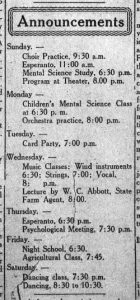 “The plan is to take up a variety of subjects and teach the practice of, them before the theory is attempted. Thus in the one hundred acres of garden attached to the Industrial School and operated by the boys and girls, they will be taught soil chemistry, botany, horticulture, agriculture, and biology. These sciences will come so naturally to them that they will not be aware that they are being taught. Later when the theory is taken up, it will be thoroughly understood, because the facts have already been inculcated. Time usually wasted by children will be used in absorbing knowledge, yet the children will enjoy it all”.4
“The plan is to take up a variety of subjects and teach the practice of, them before the theory is attempted. Thus in the one hundred acres of garden attached to the Industrial School and operated by the boys and girls, they will be taught soil chemistry, botany, horticulture, agriculture, and biology. These sciences will come so naturally to them that they will not be aware that they are being taught. Later when the theory is taken up, it will be thoroughly understood, because the facts have already been inculcated. Time usually wasted by children will be used in absorbing knowledge, yet the children will enjoy it all”.4
“Self-government is also practiced. The boys have their managers of departments, make their own laws, try their own culprits, and acquire a sense of responsibility. They like it, for it is real life. Boys who have seemed to be incorrigible have been transformed into lovable, tractable, good-natured workers. They have received the attention they needed, and have been given an interest in life and healthful means of expanding their superabundant energy”.5 An attempt was being made in this department to eliminate all but the essentials of education and, for Llano del Rio, gave promise of success.
Bonds had been voted for a five thousand dollar school house, which was to take care of the children and of those in some territory not included in the colony. It was organized as any other school district and was under the same general supervision.
The Llano del Rio Company was incorporated under the laws of Nevada. As a corporation its business was transacted the same as that of any other corporation, and it had the advantage of a capital stock consisted of two million shares, the par value of which was one dollar.
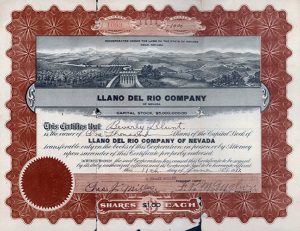 The management of affairs in a general way was in the hands of the nine directors, who were elected by the stockholders of the company. They were the legal representatives of the company and as such were responsible to the State through the corporation laws. This board of directors appointed a superintendent of the colony activities, who was directly responsible to that body.
The management of affairs in a general way was in the hands of the nine directors, who were elected by the stockholders of the company. They were the legal representatives of the company and as such were responsible to the State through the corporation laws. This board of directors appointed a superintendent of the colony activities, who was directly responsible to that body.
The superintendent, with the sanction of the board of directors, appointed the assistant superintendent and the heads or managers of the various departments, who appointed the department foremen. Assistant foremen were appointed as needed in the different departments. The assistant superintendent and the foremen could be removed at the option of the superintendent and board of directors, the latter body having, of course, power to remove the superintendent. The board of directors could be recalled by a vote of sixty per cent of the stockholders. Thus we see the final authority came back to the stockholders, each having one vote regardless of the amount of stock held.
There were four distinct departments, with a fifth made up of several lines of activity, grouped together for convenience: (1) Farm, (2) Livestock, (3) Industries, (4) Construction, (5) Administration, Architects, Medical, Membership.
The rules and regulations of the managers, before becoming operative, had to be submitted to the board of directors. Managers and superintendent had regular office hours, so they could be easily reached by those who desired to talk over matters with them. In case of trouble or dispute, if adjustment could not be made by the managers or superintendent, the case was presented to the board of directors for final settlement.
The nature of the “contract” and the “Agreement of Employment” is interesting. Leading features included the following :
Each share holder agreed to buy two thousand shares of stock at the par value of one dollar.
Each agreed to pay one thousand dollars in money (cash at time of signing contract, if possible).
Each agreed to pay in labor, one thousand dollars.
Each received a daily wage of four dollars.
The one thousand dollars in labor could be paid by deducting one dollar a day from the four dollars daily wage.
Out of the balance of the three dollars wages the colonist bought his food and clothing from the company store and commissary.
The balance remained to the credit of the individual and could be drawn out in cash from the surplus profits of the colony (if such surplus ever accumulated).
A sum of not more than seventy-five dollars could be drawn each year in cash, which could be spent outside of the colony.
Continuous employment was guaranteed by the company, with provision for annual vacation of two weeks.
No stockholder could’ own more shares than other members.
It was very evident from the conditions of these contracts that all were to be treated alike, regardless of earning ability. The individual was lost sight of in the welfare of the community. All a man could expect — in fact, all he should want, according to the philosophy of the colonists — was the opportunity to earn what he and his family needed to eat and wear, and a place to live in peace and happiness. If he had private property, however, aside from what he had to put into his payments to the colony he was free to take care of it in his own way, but it could not be used in a productive capacity in the colony. He could have pictures, pianos, automobiles, or anything else in the colony which did not interfere with the productive or distributive processes of the colony.
The question was often asked if a single man was not at a disadvantage under this contract. In the first place, such a matter was not supposed to be worthy of consideration with these people. Then, too, if the credits were ever realized on in cash, the members who had made the smallest demands in food and clothing would get the most money.
It is most natural that many difficulties should present themselves in an undertaking of this kind. Some of the troubles of the Llano colony were very similar to those met with by earlier communistic settlements. However, it is probable that some of these difficulties were, as with other colonies, blessings in disguise ; they indirectly contributed, at least, temporary strength to the enterprise.
One of the handicaps to the rapid development of the Llano property and to placing it on a more productive basis was the lack of capital. Land had to be bought, water rights secured and developed, houses built, stock and machinery obtained, offices constructed and an advertising and selling campaign conducted, with very little capital outside of the money derived from memberships. This necessitated a large use of credit and a very frugal use of the resources for even the necessities of life. The common necessity, however, made for community thought and action.
Llano del Rio, like many of the earlier colonies of the country, experienced periods of social unrest and dissatisfaction.
This condition was inevitable unless many applicants were excluded and only people of common ideals, harmonious and select, were permitted to become members. While a more careful and conscientious sifting process might have worked for the ultimate good of the colony, it would have been a hard policy to pursue during the early days when funds and labor were both so much needed in the development work.
The Llano del Rio Company was originally organized under the laws of California and, although later operated under a Nevada charter, it was subject to the laws and regulations governing such corporations in this State and also subject to inspection and super vision by the Commissioner of Corporations. During 1915, com plaint against the management of the colony was made to the Commissioner, which resulted in his appointing Deputy Commissioner H. W. Bowman of Los Angeles to investigate the company affairs generally. Mr. Bowman’s report was submitted to the Commissioner December 31, 1915, and contained material of value in this discussion. This report resulted in the Commissioner of Corporations issuing specific instructions to the company governing the sale of stock, at the time the permit authorizing such sale was made.
Shortly after this thirty-two dissatisfied colonists withdrew from the colony, and in a signed statement presented to the Commissioner of Corporations declared that the colony, organized as a cooperative enterprise, having for its purpose mutual helpfulness, had become a one-man autocracy, an organization dominated absolutely by Mr. Harriman, who ruled arbitrarily and often without a semblance of justice. Although the statement was not specifically made that Mr. Harriman’s management was in his own interests individually, it is an implication that such was the case.
This was followed in a few weeks by a reply to the report of Mr. Bowman and the charges of the colonists who had withdrawn, written by Mr. Harriman.
Mr. Bowman’s report to the Commissioner of Corporations was comprehensive and well arranged. It was submitted in the analytic ‘ style in which attorneys’ briefs are usually submitted. It was written apparently in the spirit of a public official who had discovered a situation which needed, in his opinion, the firm and careful exercise of the law in order to remedy a condition which was producing injustice to a number of citizens of the State.
Mr. Harriman’s answer, on the other hand, was written to justify the conduct of affairs by the company officers. It explained from the official viewpoint the reasons why actions cited in Mr. Bowman’s report as unwise and unjust, were taken. His position was that many of the official acts of himself or the directors of the company, were not only justifiable, but wise, and in the interests of the company as a whole, and, if understood, would be viewed by others in that way.
It is neither necessary nor wise to go into a detailed discussion of this controversy in this paper. It was difficult for each side to appreciate the position of the other, and some injustice probably resulted. However, the final result was no doubt beneficial to the colony and brought about a closer supervision of the company affairs by the Commissioner of Corporations.
The personnel of the colonists is interesting. About twenty-five per cent of the members were Californians and, as might be expected, a majority came from west of the Rocky Mountains — at least sixty to seventy per cent. Recruits came from the South, the Middle West and the East, but they were comparatively few in number. The several occupations of the colonists prior to their coming to Llano are an interesting study. On June 26, 1917, a survey showed that six had been engaged in transportation, fifteen in professional lines, five in the printing trades, ten clerks, eight miners, eighteen workers in manufacturing plants, seventy-three in business lines, thirteen in building trades, and one hundred four farmers.
There were few foreigners in Llano. Nearly all were so far removed from foreign parentage that they would be classed as Americans. Their habits, thought and ideals were formed by American influences.
The character of the members of the colony was above what I expected to find before my visit there. The leaders were wide awake men of affairs, several of whom had had very successful private business experience.
As one conversed with the people one was impressed with the fact that, for the most part, they were men and women of intelligence and common sense. They were not there because they were “down and out” and unequal to the struggle of life. If that had been the case they would have been unable to raise the necessary funds to become members of the colony. They were largely substantial persons who had banded themselves together to attempt to work out a community life that was without a capitalist and where the fruits of toil went where, in their estimation, they belonged, to the laborer.
In the fall of 1917 it was decided by the directors of the company that a change of location of the home or mother colony would be beneficial. It was urged. that progress would be more rapid, and prosperity and ultimate success more sure, if the colony were located in a section of the country with larger agricultural possibilities. The proposal was agreed to by the colonists, and in November, 1917, the company interests, material and spiritual, were largely transferred to Stables, La. Here a tract of sixty thousand acres, well provided with buildings, had been purchased, which was to become the new home, the new center of this communistic enterprise.
Reports from; Stables indicate progress, and those who have watched developments in California will observe with interest the colony career in Louisiana.
Mountain Meadows–the dark valley where in late 1857 the murder of 135 men, women and children took place. They were rendered defenseless and surrendered after several days of siege on their defensive circle of wagons losing 10 men in the battle. The unsuspecting victims, expecting to be led to a local town were marched up a hill and the slaughter began in earnest.
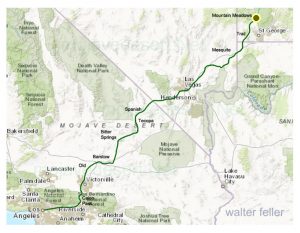
In 1864 Sarah Rousseau came through the site on her way to California with the Earp family noting the following comments in her diary;
“They arrived here in September, ’57, where they were murdered in cold blood by the Mormons. There was a monument raised to their memory once before, but the Mormons tore it down. This spring sometime in May, some soldiers came through California and erected this monument and dared any of the Mormons to touch it.
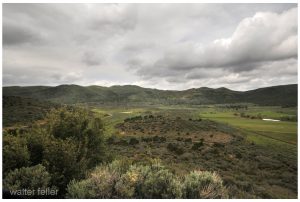
There were survivors. She continued;
“There were 150 cruelly butchered men women and children, only six small children, too young to tell the tale, were suffered to live. They are at Salt Lake City. I cannot for a moment suppose that such barbarism will be buried in oblivion. “Oh, it cannot be.” It will be brought to light and the aggressors punished.
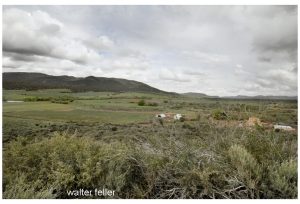
Brevet Major Henry Carleton led his troops into the area discovering the hastily buried bodies at the massacre site.
In his special report of 1859 the Major did not hold back his distaste for Mormons and these events;
“In pursuing the bloody thread which runs throughout this picture of sad realities, the question how this crime, that for hellish atrocity has no parallel in our history, can be adequately punished often comes up and seeks in vain for an answer. Judge Cradlebaugh says that with Mormon juries the attempt to administer justice in their Territory is simply a ridiculous farce. He believes the Territory ought at once to be put under martial law. This may be the only practical way in which even a partial punishment can be meted out to these Latter-Day devils.
“But how inadequate would be the punishment of a few, even by death, for this crime for which nearly the whole Mormon population, from Brigham Young down, were more or less instrumental in perpetrating.
In his book, Roughing It, Mark Twain described the reaction of the pubic upon hearing of the mass murder: “The whole United States rang with its horrors.”
Hindered by the Civil War and other events indictments were issued but the only one convicted was a Mr. John D. Lee who was executed by firing squad in 1877, 20 years after the fact.
https://mojavedesert.net/mountain-meadows/
Pictorialism, an approach to photography that emphasizes beauty of subject matter, tonality, and composition rather than the documentation of reality.
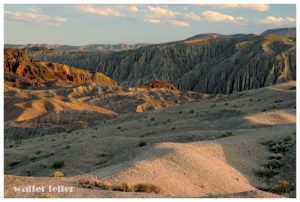
The Pictorialist perspective was born in the late 1860s and held sway through the first decade of the 20th century. It approached the camera as a tool that, like the paintbrush and chisel, could be used to make an artistic statement. Thus photographs could have aesthetic value and be linked to the world of art expression.
Encyclopædia Britannica
Step 1: Locate Garlock fault alignment
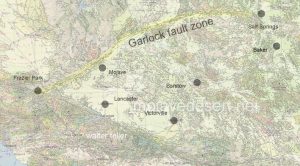
Step 2: Review alignment transfered to overlays
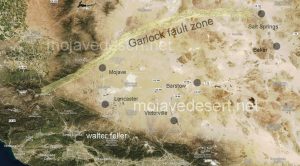
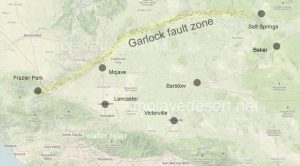
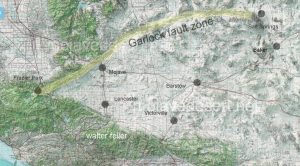
Step 3: Locate eastern end of fault.
By word of mouth and small scale maps the eastern end of the fault appears to be located just west of Salt Springs, which is on state highway 127 between Baker and Shoshone, California near Dumont Dunes.
(still working on it)
[huge_it_gallery id=”16″]
Kwanamis
The dream world was as important to the Mojave People as was the physical world. It was from this dream state instruction was given that would guide them to their destiny.
The Mojave Warrior was as brutal and violent in battle as his enemy. Even more so, not only because of strength and endurance but because those who had bad dreams; dreams of death and misfortune, were left behind in the villages with the women so not to bring a curse to the war.
Among the small and dangerous bands were mixed the Kwanamis. They were the elite warrior captains. The Kwanamis were said to have dreamed of war and the death of their opponents in the womb before their birth. Their dreams would be of ripping lion and bear creatures apart with bare hands and emerging from the dust victorious and unscathed.
The Kwanamis lived apart from the rest of the Mohave People, in the south of the valley where Mastamho, the God-son, fought with the serpent under the three peaks. It was here they would fast and meditate on the death of their opponents and the art of warfare.
These men who were stoic and impervious to heat, cold, hunger, and pain, would practice with their war bows and clubs in order to be the most effective in ministering death to their foes.
 Death Valley was having one of its periodic wind storms when the tourists drove up in front of Inferno store to have their gas tank filled.
Death Valley was having one of its periodic wind storms when the tourists drove up in front of Inferno store to have their gas tank filled.
Hard Rock Shorty was seated on the bench under the lean-to porch with his hat pulled down to his ears to keep it from blowing away.
“Have many of these wind storms?” one of the dudes asked.
“Shucks, man, this ain’t no wind storm. Jest a little breeze like we have nearly every day. You have to go up in Windy Pass in the Panamints to find out what a real wind is like.
“Three-four years ago I wuz up there doin’ some prospectin’. Got together a little pile o’ wood an’ finally got the coffee to boilin’. Then I set it on a rock to cool while I fried the eggs.
“About that time one of them blasts o’ wind come along and blowed the fire right out from under the fryin’ pan. Blowed ‘er away all in one heap so I kept after it tryin’ to keep that fryin’ pan over the fire to git my supper cooked.
“I usually like my eggs over easy, but by the time 1 got one side done I wuz all tired out so I let ‘er go at that. Had to walk four miles back to the coffee pot.”
from; Desert Magazine – December 1953
Once I asked Shorty Harris how he obtained his grubstakes. “Grubstakes,” he answered, “like gold, are where you find them. Once I was broke in Pioche, Nev., and couldn’t find a grubstake anywhere. Somebody told me that a woman on a ranch a few miles out wanted a man for a few days’ work. I hoofed it out under a broiling sun, but when I got there, the lady said she had no job. I reckon she saw my disappointment and when her cat came up and began to mew, she told me the cat had an even dozen kittens and she would give me a dollar if I would take ’em down the road and kill ’em.
“‘It’s a deal,’ I said. She got ’em in a sack and I started back to town. I intended to lug ’em a few miles away and turn ’em loose because I haven’t got the heart to kill anything.
“A dozen kittens makes quite a load and I had to sit down pretty often to rest. A fellow in a two-horse wagon came along and offered me a ride. I picked up the sack and climbed in.
“‘Cats, eh?’ the fellow said. ‘They ought to bring a good price. I was in Colorado once. Rats and mice were taking the town. I had a cat. She would have a litter every three months. I had no trouble selling them cats for ten dollars apiece. Beat a gold mine.’
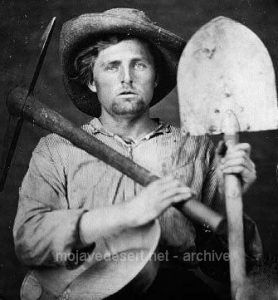
“There were plenty rats in Pioche and that sack of kittens went like hotcakes. One fellow didn’t have any money and offered me a goat. I knew a fellow who wanted a goat. He lived on the same lot as I did. His name was Pete Swain.
“Pete was all lit up when I offered him the goat for fifty dollars. He peeled the money off his roll and took the goat into his shack. A few days later Pete came to his door and called me over and shoved a fifty-dollar note into my hands. ‘I just wanted you to see what that goat’s doing,’ he said.
“I looked inside. The goat was pulling the cork out of a bottle of liquor with his teeth.
“‘That goat’s drunk as a boiled owl,’ Pete said. ‘If I ever needed any proof that there’s something in this idea of the transmigration of souls, that goat gives it. He’s Jimmy, my old sidekick, who, I figgered was dead and buried.’
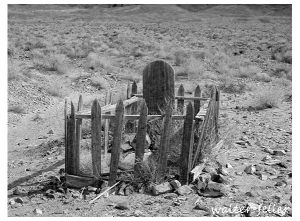
“‘Now listen,’ I said. ‘Do you mean to tell me you actually believe that goat is your old pal, whom you drank with and played with and saw buried with your own eyes, right up there on the hill?’
“‘Exactly,’ Pete shouted, and he peeled off another fifty and gave it to me. So, you see, a grubstake, like gold, is where you find it.”
from:
Loafing Along Death Valley Trails
A Personal Narrative of People and Places
Author: William Caruthers